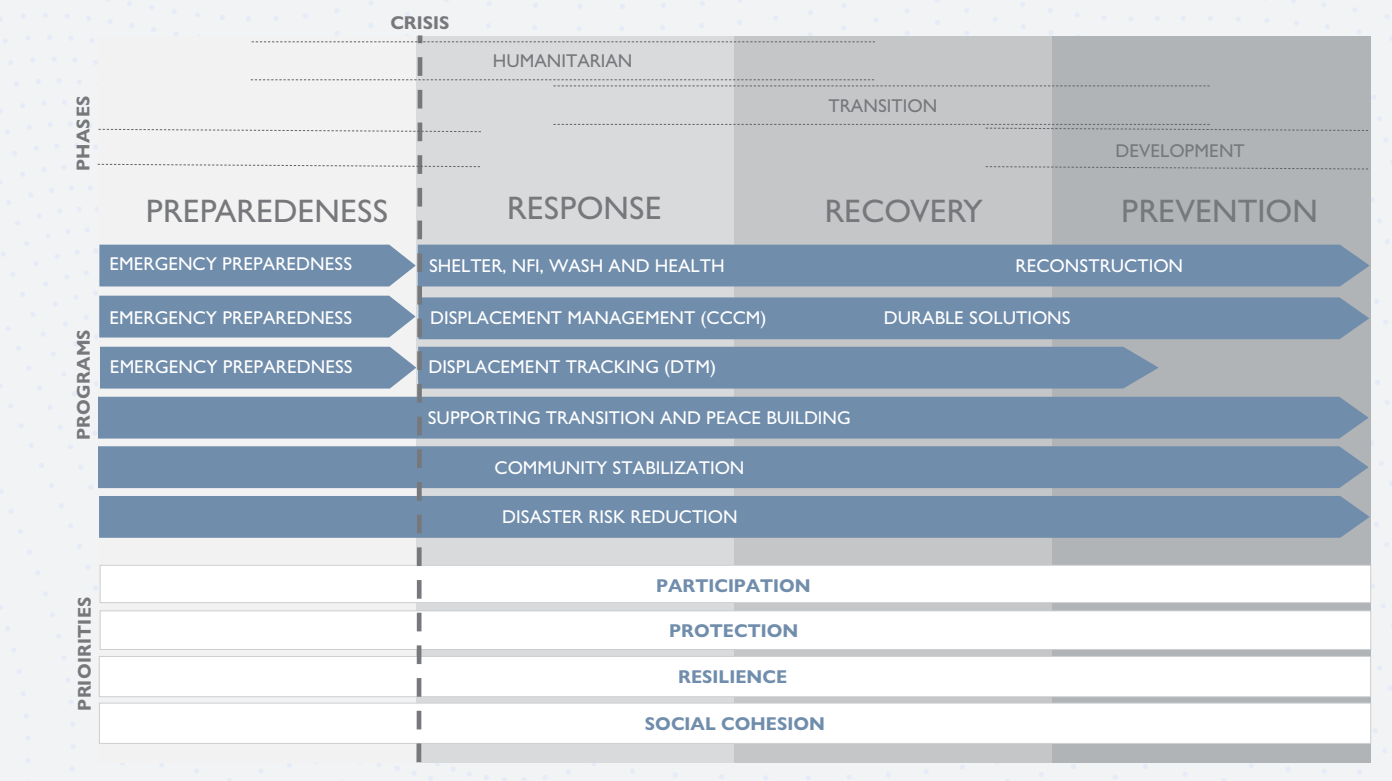-
Who We Are
WHO WE AREThe International Organization for Migration (IOM) is part of the United Nations System as the leading inter-governmental organization promoting since 1951 humane and orderly migration for the benefit of all, with 175 member states and a presence in over 100 countries.
About
About
IOM Global
IOM Global
-
Our Work
Our WorkAs the leading inter-governmental organization promoting humane and orderly migration, IOM plays a key role to support the achievement of the 2030 Agenda through different areas of intervention that connect both humanitarian assistance and sustainable development. Across Asia and the Pacific, IOM provides a comprehensive response to the humanitarian needs of migrants, returnees and host communities.
Cross-cutting (Global)
Cross-cutting (Global)
- Where we work
- Take Action
- Data and Resources
- 2030 Agenda
Facts and Figures

2,241,969

9,769,184

188,544

703,889
The Asia-Pacific region regularly faces both sudden and slow-onset disasters which affect hundreds of millions of individuals annually and result in significant displacement and damage to infrastructure.
According to the Internal Displacement Monitoring Centre (IDMC) 2020 Global Report on Internal Displacement, 21.9 million people were displaced in Asia and the Pacific due to conflict and disasters in that year alone, representing 54.1 percent of global displacement in 2020.
Specifically, 97 percent of all displacement in Asia and the Pacific in 2020 was caused by disasters. While regional and national disaster management capacities have been established and enhanced, they are often overwhelmed due to the frequency and scale of the impact on people’s lives, livelihoods and infrastructure.
In 40 countries in Asia and the Pacific, IOM is committed to supporting regional institutions and Member States to reduce exposure and vulnerability to risks, enhance communities’ resilience and augment the capacity of crisis response agencies.
IOM supports capacity building and long-term risk reduction efforts in order to strengthen national responses and assure the operational presence required for rapid reaction and scale-up during sudden onset disasters. This enables life-saving responses, the ability to provide real time displacement monitoring, support for recovery efforts and the identification and establishment of durable solutions for affected communities.
- Areas of Intervention
-
IOM Emergency and Post-Crisis (EPC) programs are situated along all phases of the humanitarian-development-peace nexus. These phases of crisis operations, the types of IOM programming, and IOM’s key institutional priorities are illustrated below:

The EPC Unit ensures that IOM missions in Asia and the Pacific are prepared to respond to migration crisis needs as part of a larger regional focus on building resilience and address needs across the humanitarian-development-peace nexus.
Emergency preparedness, response, recovery and prevention programming must operate in complementarity in order to address acute humanitarian crises at their onset and evolve to assist recovery and enable organizational learning to reinforce continual improvement to prevention, mitigation and preparedness actions. This ensures that communities and governments are supported during emergencies, and that local and national entities are assisted in strengthening resilience and preparedness in the face of future crises.
The EPC Unit strives to effectively implement a range of programs while mainstreaming a set of critical priorities such as protection and resilience. As illustrated above, different types of programs such as shelter interventions and community stabilization may be implemented at a certain point or points in this continuum, or throughout all stages of IOM operations, while IOM’s critical priorities and principles remain a constant, informing and shaping all programming throughout its progression.
Core technical capabilities of the unit include coordination, data analytics including GIS, protection and gender-based violence, shelter, WASH, camp management, conflict and stabilization, peacebuilding and disaster risk reduction.
The EPC Unit serves as the core deployment team to scale up life-saving, humanitarian crisis response activities in Asia and the Pacific. It also provides technical advice and policy guidance to field offices on contingency plans and logistics relevant to field responses to sudden onset and protracted and complex emergencies.In parallel, the unit is responsible for IOM’s resilience programming to reduce, mitigate and prevent the negative impacts of crises. These programs deal with risks and vulnerabilities, as well as post-crisis effects on human mobility and displacement. IOM helps to ensure sustainable return and reintegration of displaced populations and works to address the drivers of future displacement.
The IOM sectors of assistance are guided by the Migration Crisis Operational Framework (MCOF), a framework for analysis and planning to better prepare for, respond to, and recover from migration crises and address particular mobility dimensions in crisis.
The Asia Pacific EPC Unit also supports regional and thematic stakeholders in decision-making related to humanitarian affairs and strengthens partnerships with organizations within and outside of the humanitarian architecture.
To enable improved evidence-based decision making for response and recovery, the EPC includes a dedicated Information Management function focused on mobility tracking, operational data gathering and analysis in areas of forced migration and complex mobility (Displacement Tracking Matrix [DTM]).